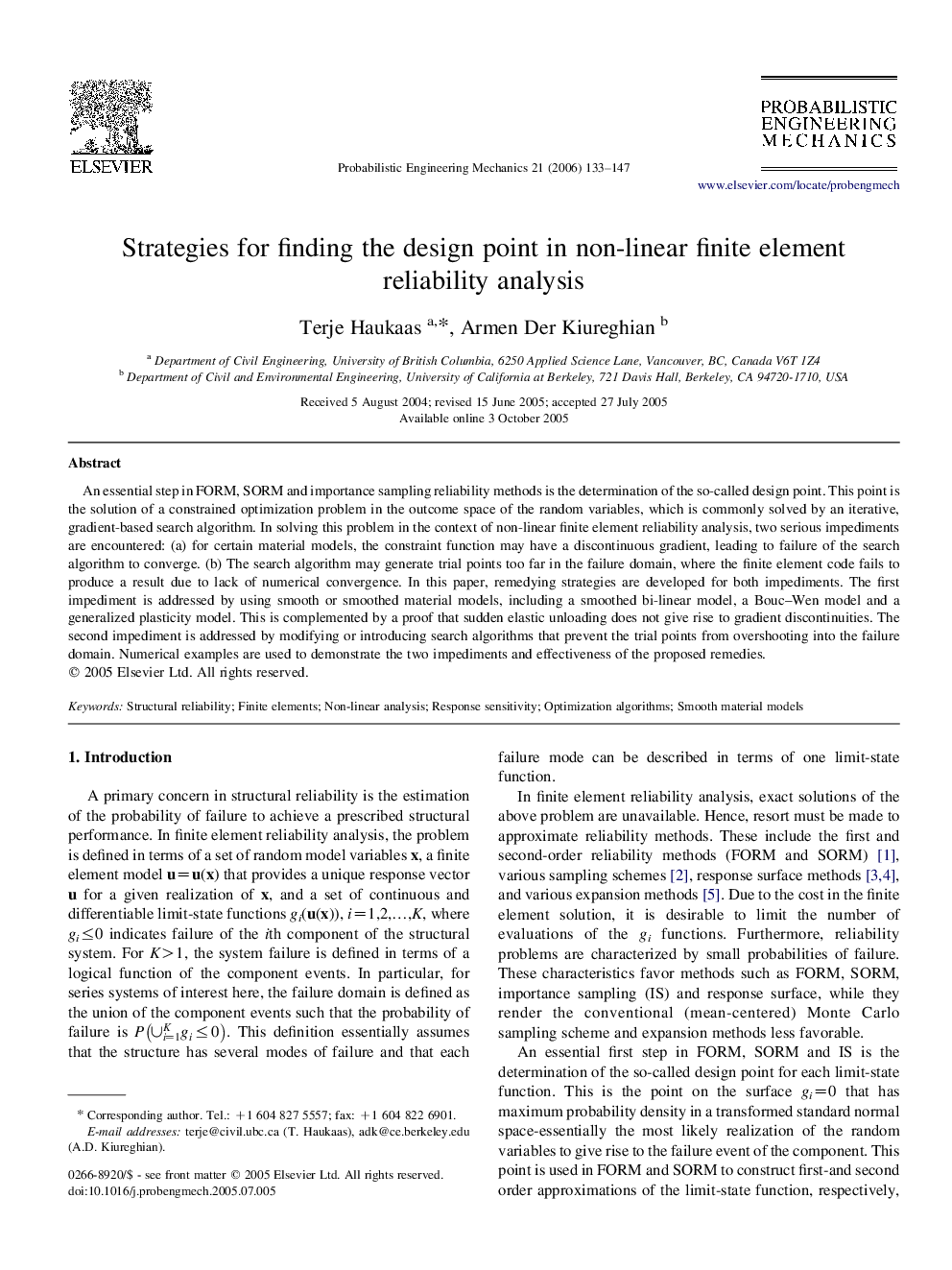| Article ID | Journal | Published Year | Pages | File Type |
|---|---|---|---|---|
| 802572 | Probabilistic Engineering Mechanics | 2006 | 15 Pages |
An essential step in FORM, SORM and importance sampling reliability methods is the determination of the so-called design point. This point is the solution of a constrained optimization problem in the outcome space of the random variables, which is commonly solved by an iterative, gradient-based search algorithm. In solving this problem in the context of non-linear finite element reliability analysis, two serious impediments are encountered: (a) for certain material models, the constraint function may have a discontinuous gradient, leading to failure of the search algorithm to converge. (b) The search algorithm may generate trial points too far in the failure domain, where the finite element code fails to produce a result due to lack of numerical convergence. In this paper, remedying strategies are developed for both impediments. The first impediment is addressed by using smooth or smoothed material models, including a smoothed bi-linear model, a Bouc–Wen model and a generalized plasticity model. This is complemented by a proof that sudden elastic unloading does not give rise to gradient discontinuities. The second impediment is addressed by modifying or introducing search algorithms that prevent the trial points from overshooting into the failure domain. Numerical examples are used to demonstrate the two impediments and effectiveness of the proposed remedies.
